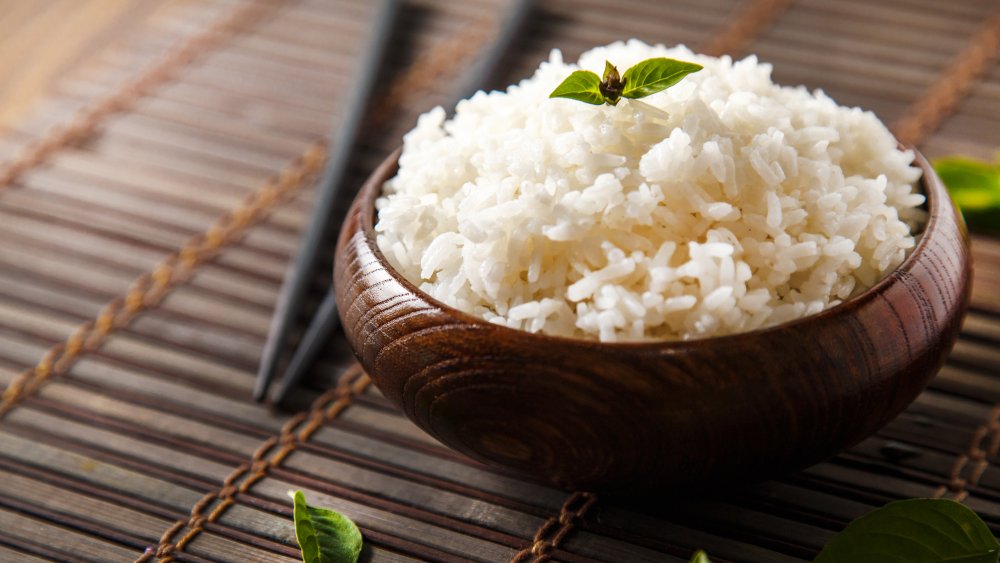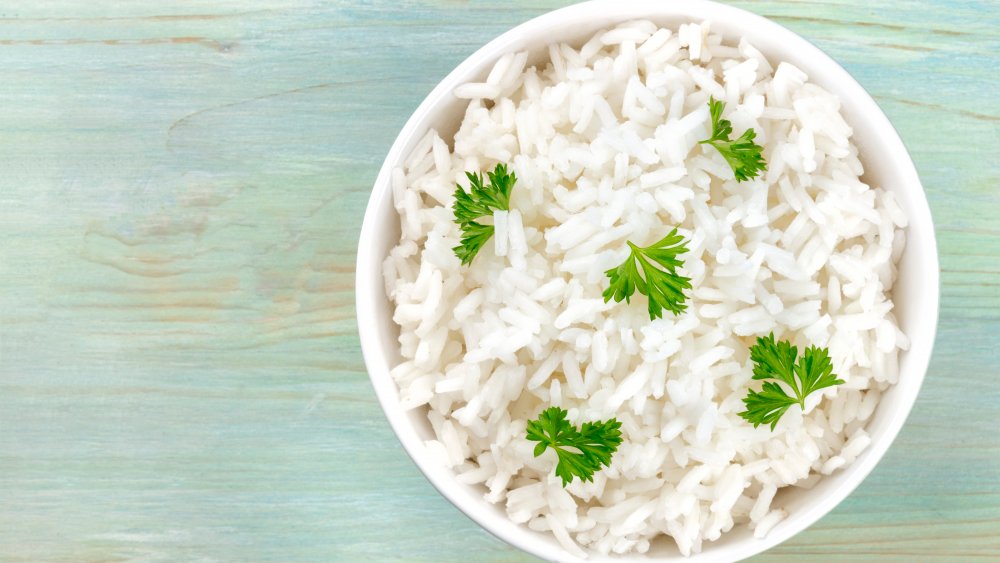The Real Difference Between Jasmine Rice And White Rice
Rice is one of the world's most popular carbohydrate sources — between 2018 and 2019, more than 486 million metric tons of the grain was gobbled up around the globe (via Statista). And, according to Bon Appétit, more than 40,000 types of rice populate the planet, generally categorized into short-, medium-, and long-grain varieties.
Though there are many white rices available — from short-grain arborio to long-grain Indian basmati — when most people think of white rice, they think of American long-grain white rice, which, when cooked, offers a "dry, fluffy texture with distinct grains" (via Fine Cooking). Though also a long-grain variety, jasmine rice, by contrast, is characterized by its distinct aroma and "soft, clingy texture" when cooked.
According to Cook's Illustrated, the reason for jasmine's slight stickiness is the presence of amylopectin, a molecule that has "bushy branches" that prevent distinct separation. On the other hand, the culinary school Rouxbe notes that long-grain white rices that offer more separation contain greater amounts of amylose, which doesn't congeal through the cooking process.
Comparing flavors, cooking methods, and nutrition
According to The Spruce Eats, jasmine rice is a type of Oryza sativa, grown mainly in Southeast Asia (Thailand, Laos, Vietnam, and Cambodia), which likely contributes to its informal name, Asian rice. It's described as having a "sweet and nutty flavor," with a floral, buttery, popcorn-like aroma. Though jasmine rice is usually white, brown and black varieties also exist.
Meanwhile, USA Rice reports that almost 85 percent of rice consumed in the United States is grown here, with long-grain varieties being cultivated in Arkansas, Louisiana, Mississippi, Missouri, and Texas. Experts recommend rinsing long-grain white rice before cooking, using a ratio of 1 cup of rice to 1¼ cups of water, then cooking for 18 minutes, followed by 15 to 20 minutes of rest (via Bon Appétit). Jasmine rice should also be rinsed and requires the same rice-to-water ratio, but cooking can be completed in 12 to 15 minutes, followed by a 10- to 15-minute rest period (via The Spruce Eats).
In terms of nutritional content, the two rice types are similar. Healthline notes that jasmine rice contains more calories than long-grain white (181 to 160 per cup), plus an added gram of fat, slightly more carbs, and a small amount of iron, which is absent in white rice. Whole grain varieties of jasmine rice exist, and will provide more fiber.
Ultimately, the rice you choose will depend on the taste and texture sensations you're seeking.

